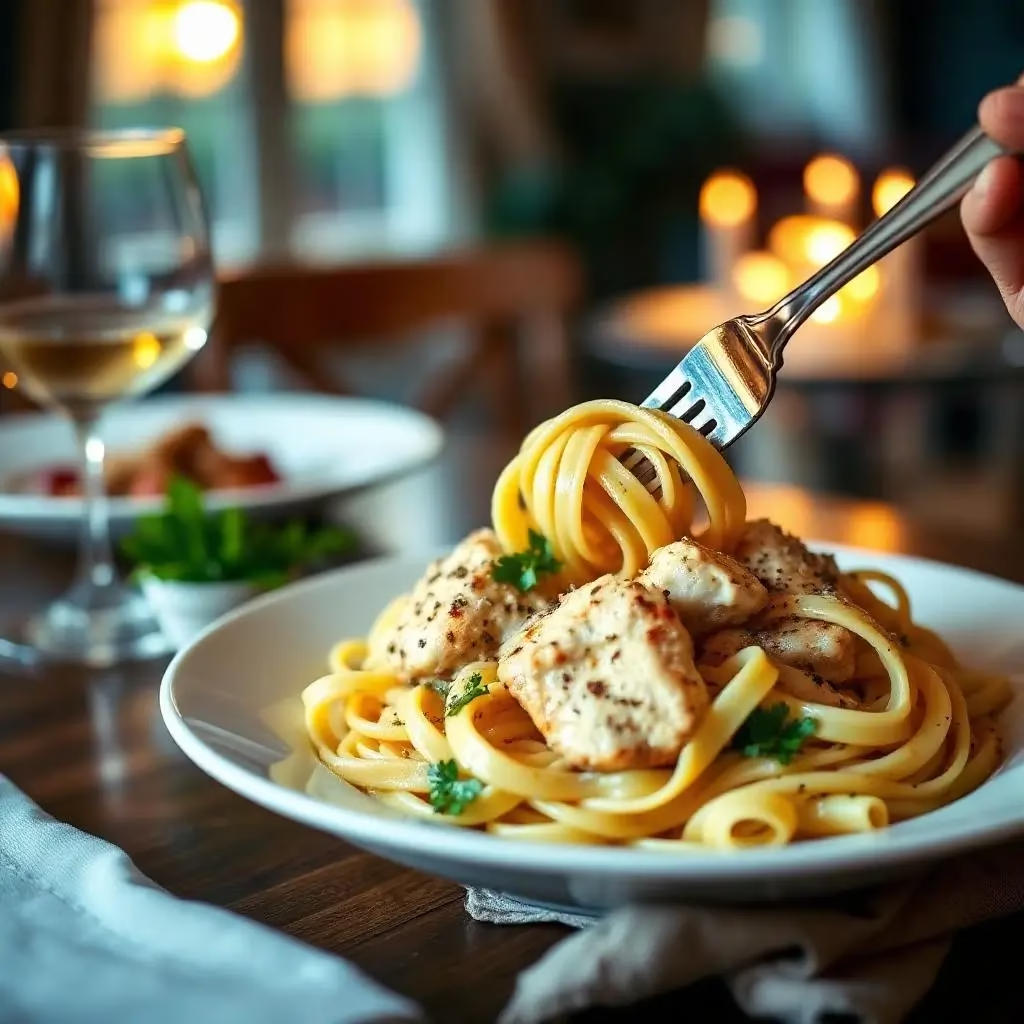When it comes to classic Italian comfort food, few dishes can compete with the rich, satisfying appeal of chicken carbonara. This beloved pasta dish combines the traditional elements of carbonara with tender, juicy chicken pieces, creating a meal that’s both hearty and elegant. Furthermore, the creamy sauce perfectly coats each strand of pasta, while the addition of protein makes it a complete, family-friendly dinner option.
Originally, carbonara was a simple Roman dish featuring eggs, cheese, and pancetta. However, this modern twist incorporates chicken to create a more substantial meal that works beautifully for weeknight dinners or special occasions. Additionally, the versatility of this chicken pasta carbonara makes it suitable for any season, though it’s particularly comforting during the cooler autumn and winter months.
Table of Content
- Why This Chicken Carbonara Recipe Works
- Essential Ingredients for Perfect Chicken Carbonara
- Step-by-Step Cooking Instructions
- Pro Tips for Carbonara Success
- Variations and Substitutions
- Serving and Storage
- Nutrition Information
- Other Pasta Recipe
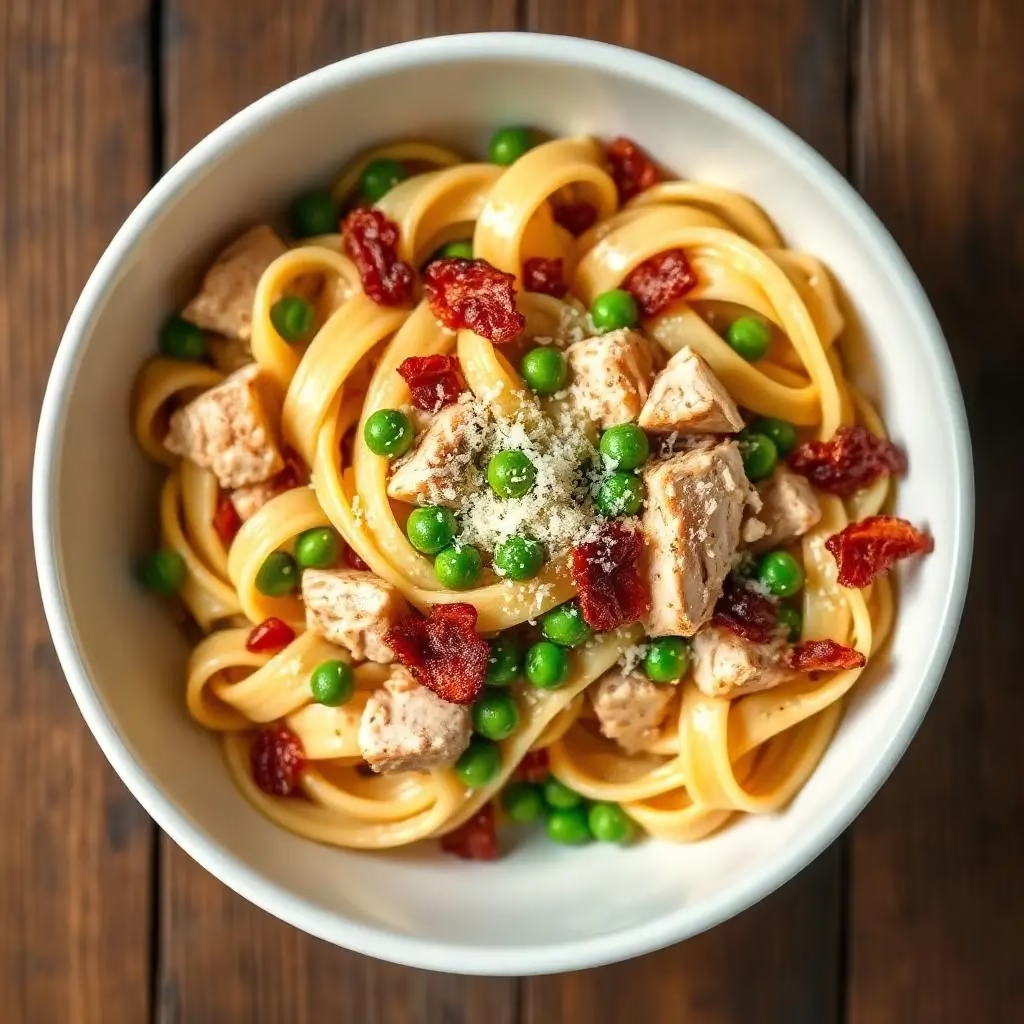
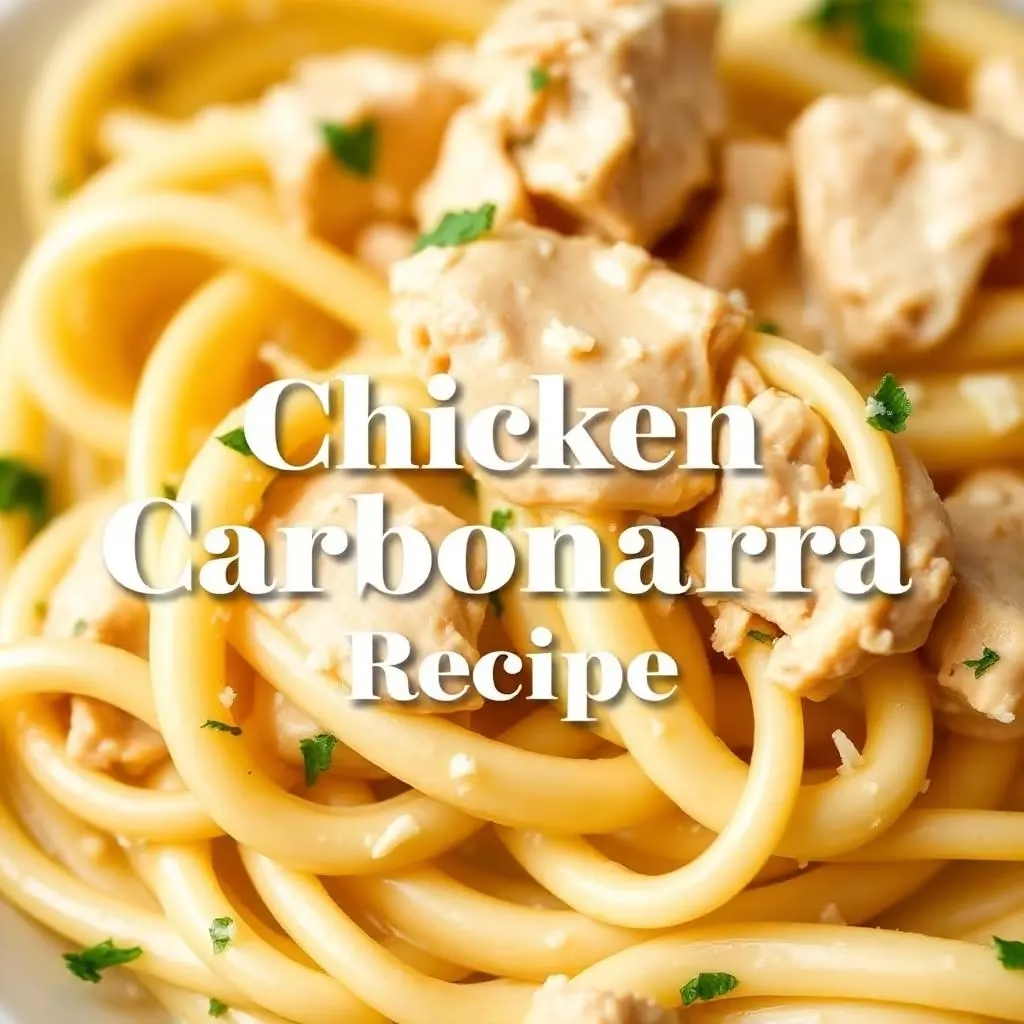
Why This Chicken Carbonara Recipe Works
First and foremost, this recipe strikes the perfect balance between simplicity and flavor. Unlike many pasta dishes that require numerous ingredients or complicated techniques, chicken carbonara relies on just a handful of quality components to create something truly spectacular. Moreover, the cooking process is straightforward enough for beginners, yet sophisticated enough to impress dinner guests.
The secret lies in the technique of creating the creamy sauce without actually using cream as the primary base. Instead, the combination of eggs, parmesan cheese, and a touch of heavy cream creates a silky, luxurious texture that clings beautifully to the pasta. Meanwhile, the chicken adds protein and substance, transforming a simple side dish into a complete meal.
Essential Ingredients for Perfect Chicken Carbonara
To begin with, selecting the right ingredients is crucial for achieving restaurant-quality results at home. The beauty of this chicken carbonara recipe lies in its simplicity, requiring only a few key components that work harmoniously together.
Diced Chicken serves as the star protein of this dish. Whether you’re using frozen chicken that’s been properly thawed or fresh chicken breast cut into one-inch cubes, ensuring even-sized pieces guarantees uniform cooking. Subsequently, this creates the perfect foundation for your chicken with carbonara.
Meat is technically optional, but highly recommended for authentic flavor. When included, it transforms the dish into a true chicken meat pasta that honors the traditional carbonara roots. Furthermore, the rendered meat fat adds incredible depth to the overall flavor profile, making this a genuine chicken carbonara with meat.
Fresh Eggs are what truly distinguish carbonara from other creamy pasta sauces. Rather than relying solely on dairy, the eggs create a custard-like sauce when properly tempered with the hot pasta. Additionally, this technique is what gives carbonara its characteristic silky texture.
Linguine is the preferred pasta choice, though virtually any long pasta works wonderfully. Whether you prefer fettuccine, spaghetti, penne, or bow tie pasta, the key is choosing something that will hold the sauce well. Consequently, this flexibility means you can easily make chicken carbonara penne or spaghetti carbonara with chicken and meat based on your preferences.
Freshly Grated Parmesan provides both flavor and helps thicken the sauce naturally. While pre-grated cheese is convenient, freshly grated parmesan melts more smoothly and creates a better texture. Meanwhile, the nutty, sharp flavor enhances every bite.
Heavy Cream adds richness and helps create the luxurious mouthfeel that makes this dish so satisfying. However, you can substitute with half-and-half, whole milk, or even evaporated milk if needed.
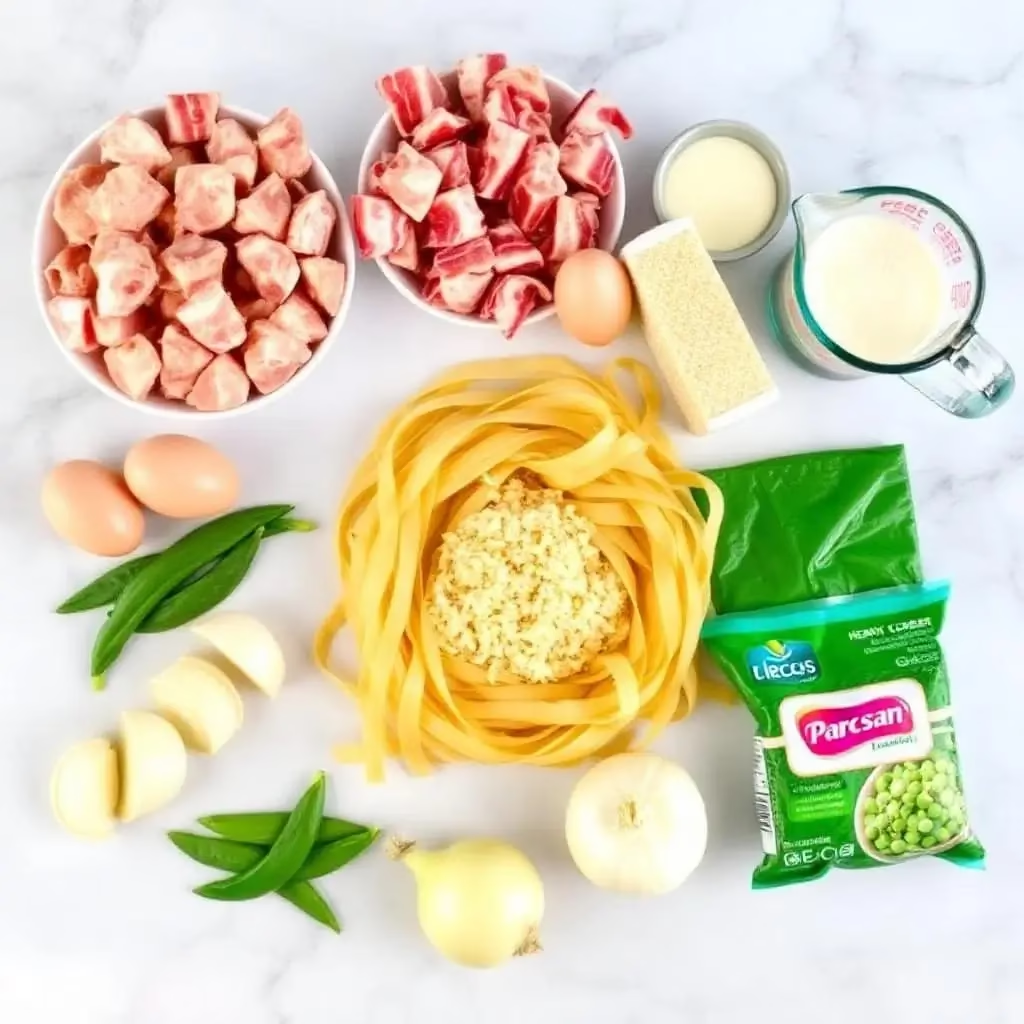
Step-by-Step Cooking Instructions
Step 1: Prepare the Chicken Base Initially, heat your pan over medium-high heat and cook the diced chicken with minced onion and garlic until the chicken is golden brown and cooked through. This process typically takes 6-8 minutes, depending on the size of your chicken pieces.
Step 2: Cook the Pasta Simultaneously, bring a large pot of salted water to boil and cook your linguine according to package directions. Importantly, reserve at least one cup of the starchy pasta cooking water before draining. This liquid gold will be essential for achieving the perfect sauce consistency later.
Step 3: Create the Egg Mixture While the pasta cooks, whisk together eggs, grated parmesan, and heavy cream in a separate bowl. This mixture will become the base of your creamy sauce, so ensure it’s well combined and smooth.
Step 4: Add Final Ingredients Next, add frozen peas and cooked meat (if using) to the chicken mixture. The peas add color, nutrition, and a pleasant pop of sweetness that balances the rich flavors. Meanwhile, the meat reinforces the traditional carbonara elements.
Step 5: Combine and Create the Sauce Most importantly, add the hot, drained pasta directly to the chicken mixture in the pan. Then, immediately remove from heat and slowly pour in the egg mixture while tossing continuously. The residual heat will gently cook the eggs, creating a creamy sauce without scrambling them.
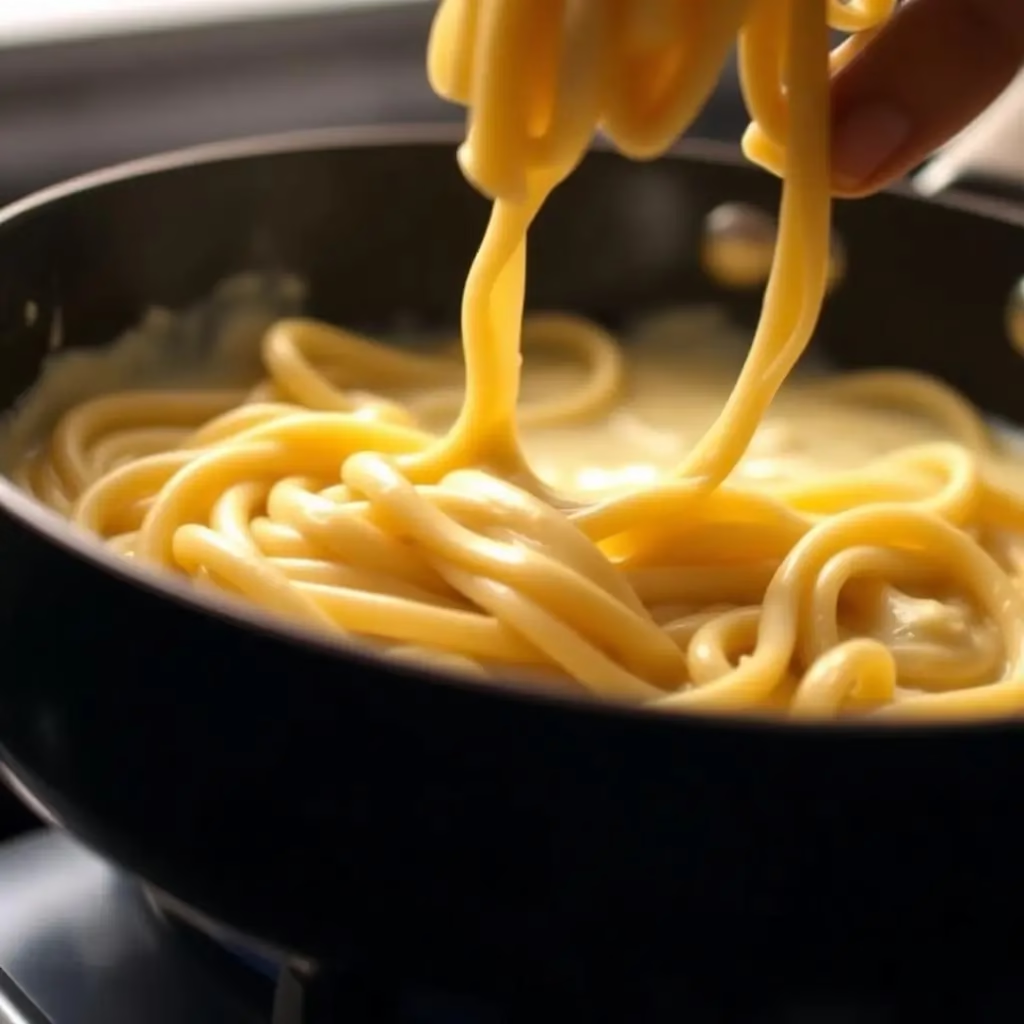
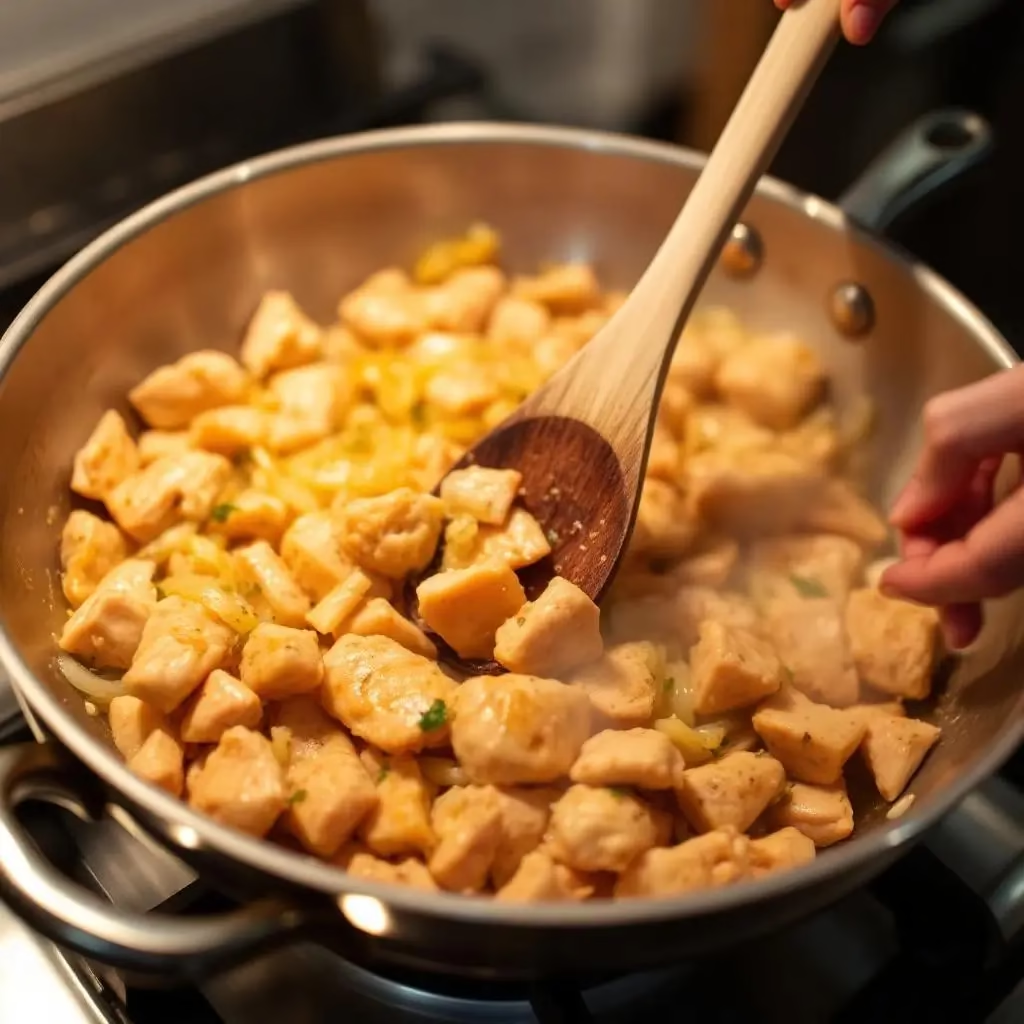
Pro Tips for Carbonara Success
Above all, temperature control is crucial when making carbonara. The pasta must be steaming hot when you add the egg mixture, but the pan should be off the heat to prevent the eggs from scrambling. Additionally, keep some reserved pasta water nearby to adjust the consistency if needed.
Furthermore, work quickly but gently when combining the ingredients. The hot pasta will cook the eggs just enough to create a creamy sauce, but too much heat or time will result in a clumpy, unappetizing texture.
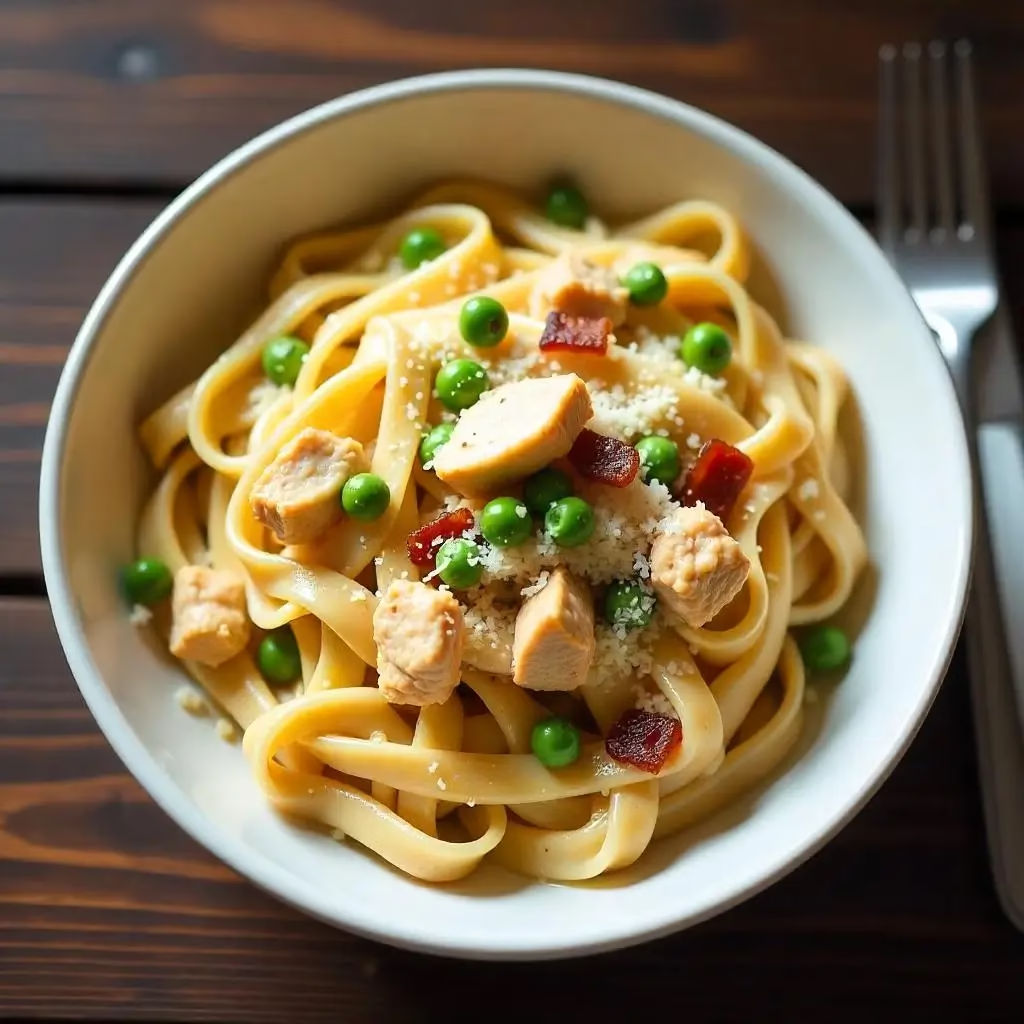
Variations and Substitutions
Fortunately, this chicken carbonara recipe is incredibly adaptable. For instance, you can easily make it spicier by adding red pepper flakes, or lighter by using Greek yogurt in place of some of the cream. Similarly, ham can be substituted for meat to create a different flavor profile while maintaining the chicken carbonara with meat concept.
Moreover, vegetable additions like broccoli, mushrooms, or sun-dried tomatoes can enhance both nutrition and flavor. For those following low-carb diets, zucchini noodles or spaghetti squash make excellent pasta substitutes.
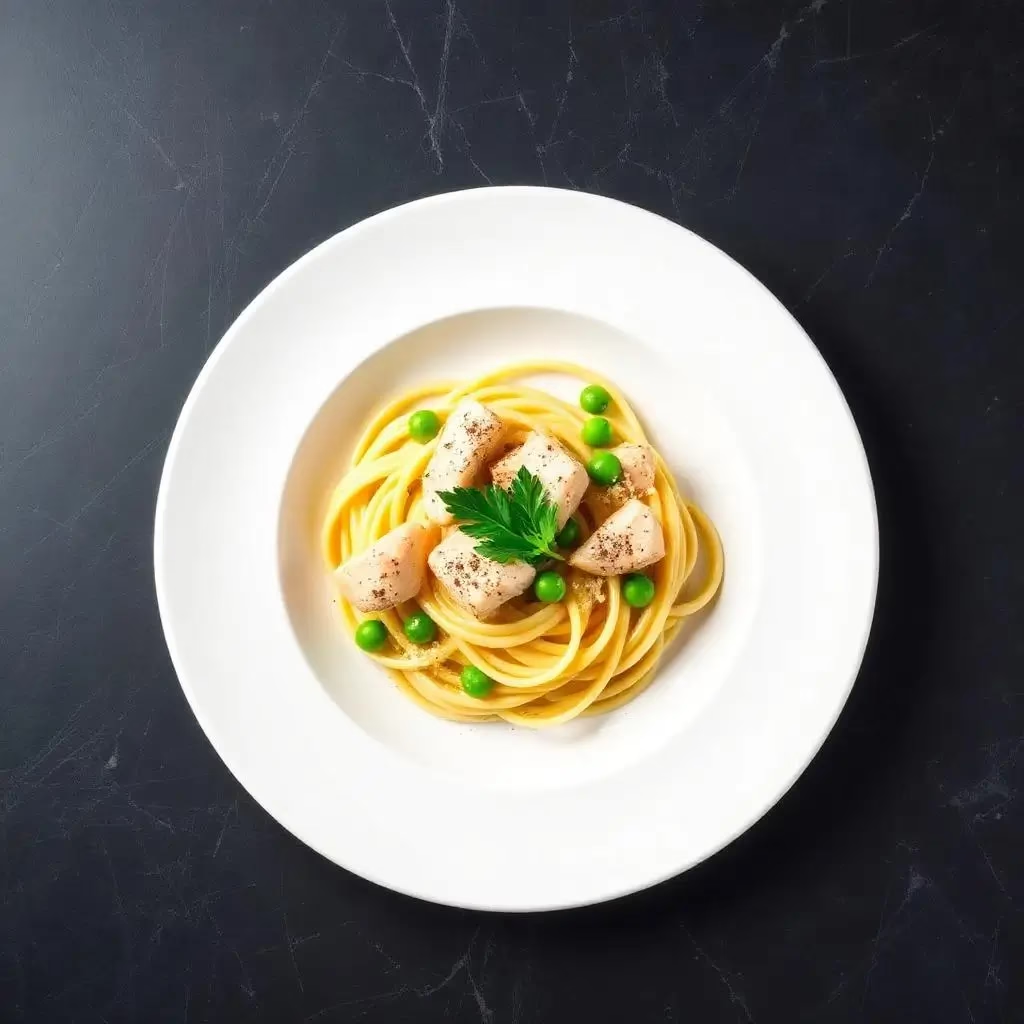
Serving and Storage
This chicken pasta carbonara serves six people generously and provides a well-balanced meal with protein, carbohydrates, and vegetables all in one dish. Additionally, it pairs beautifully with a simple green salad and crusty bread for a complete dinner experience.
For storage, leftover carbonara keeps well in the refrigerator for 4-5 days and can even be frozen for 3-4 months. When reheating, add a splash of milk or cream to restore the original creamy texture.
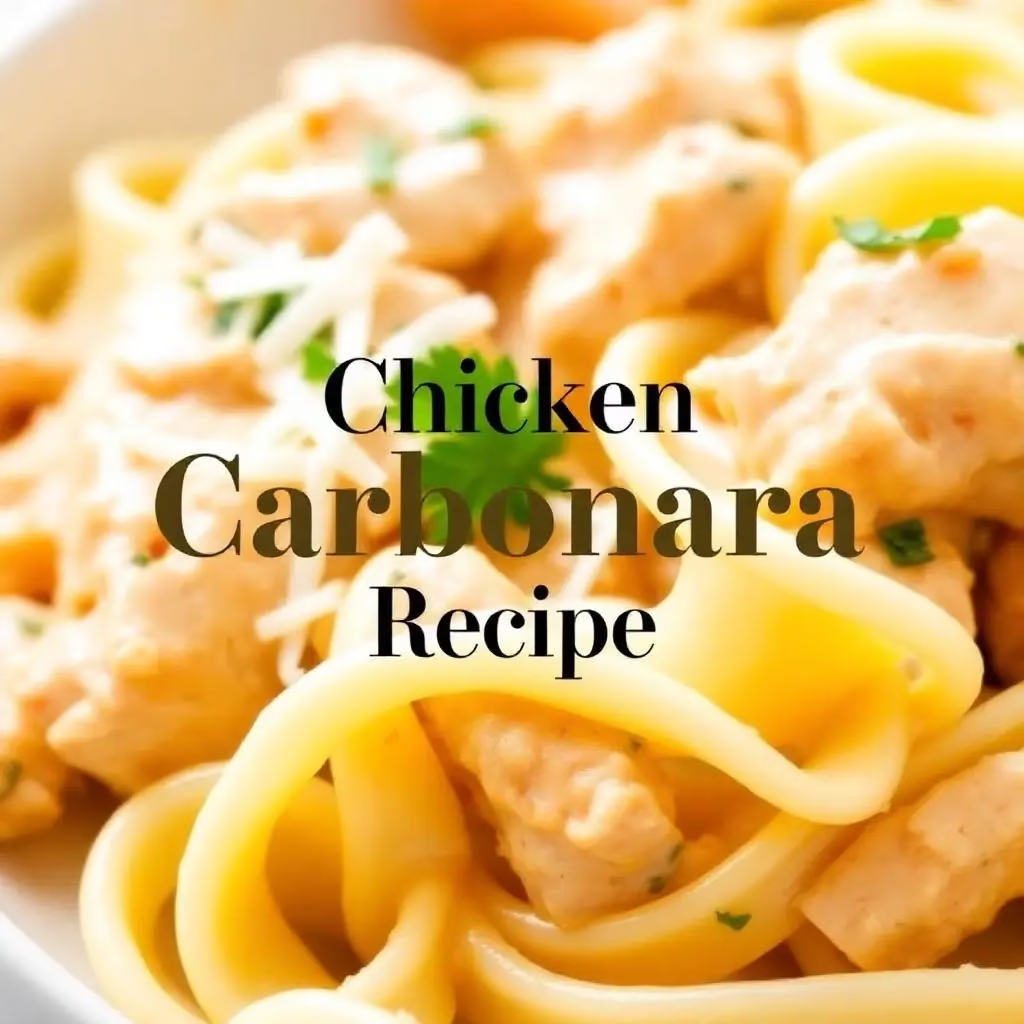
Nutrition Information
Per serving (1/6 of recipe):
- Calories503 kcal
- Total Fat18g
- Saturated Fat8g
- Cholesterol185mg
- Sodium580mg
- Total Carbs48g
- Dietary Fiber3g
- Sugars4g
- Protein35g
Other Pasta Recipe
- The Best Shrimp and Broccoli Recipe : With Honey Garlic Butter
- The Best Potato Cheese Balls: A Crispy, Cheesy Recipe
- The Ultimate Chicken Philly Cheesesteak
- Spicy Firecracker Beef
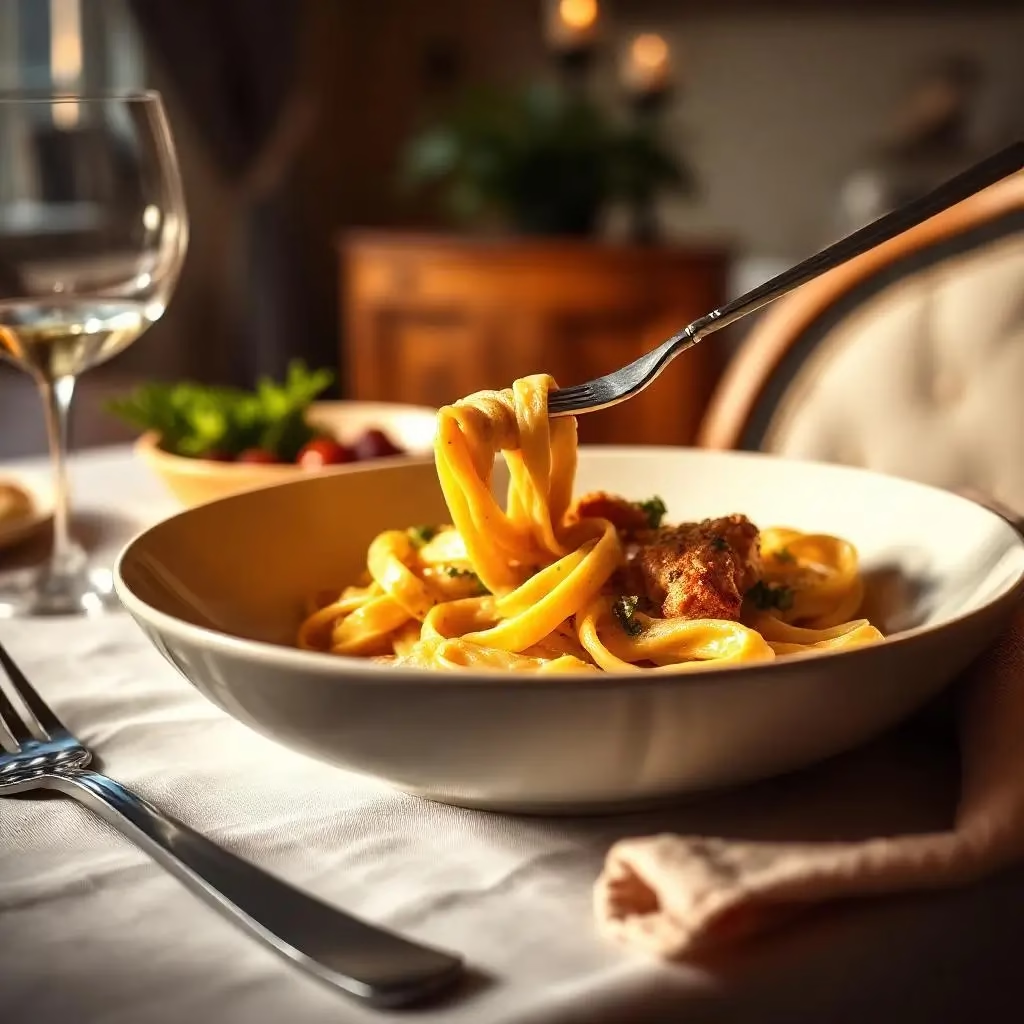
In summary, this chicken carbonara recipe delivers all the comfort and satisfaction of traditional Italian cooking while being accessible to home cooks of all skill levels. The combination of tender chicken, creamy sauce, and perfectly cooked pasta creates a meal that’s both elegant enough for entertaining and simple enough for busy weeknights. Best of all, the technique you’ll master here opens the door to countless variations, ensuring this recipe will become a staple in your dinner rotation for years to come.
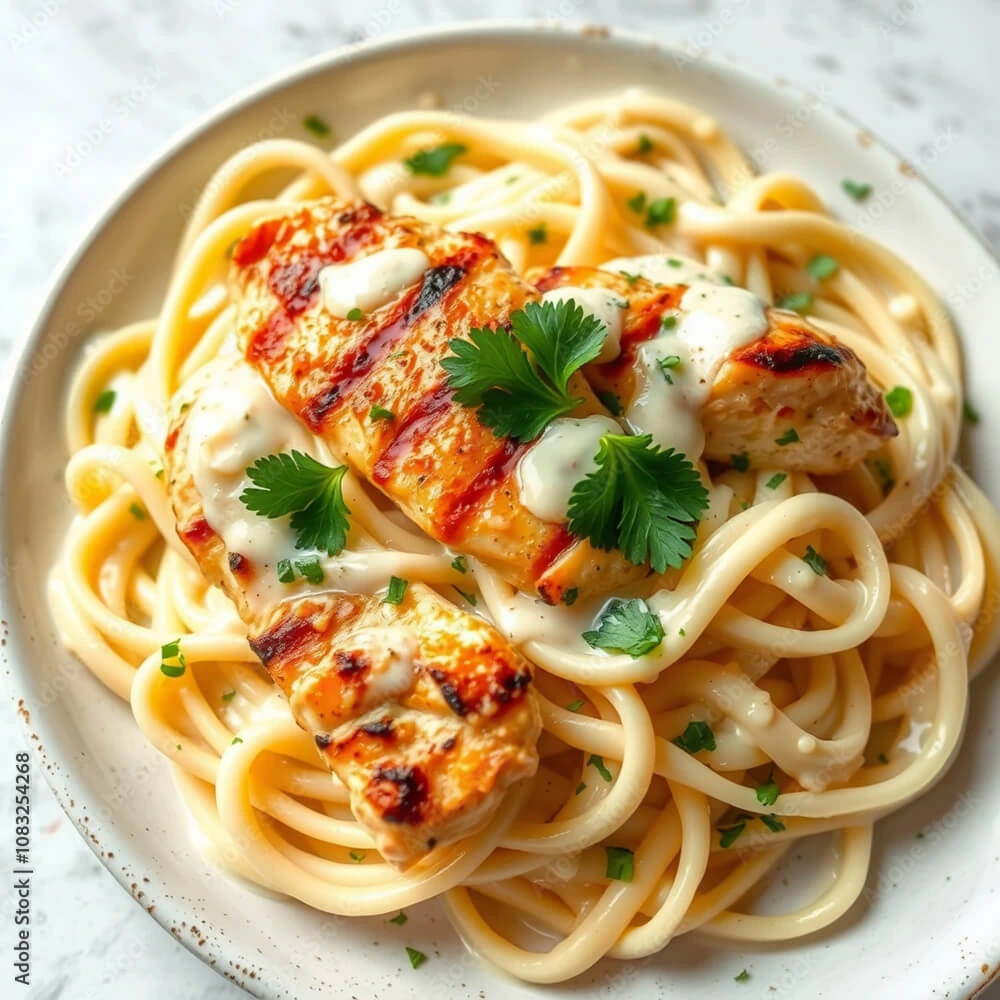
« How to Make the Best Chicken Carbonara Recipe: A Creamy and Delicious Meal »
Ingredients
Main Components
Aromatics & Vegetables
Optional Additions
Instructions
- Step 1: Prepare the Base
- Cook pasta: Bring a large pot of salted water to boil. Cook linguine according to package directions until al dente.
- IMPORTANT: Reserve 1 cup of pasta cooking water before draining.
- Step 2: Cook the Chicken
- Heat oil: In a large skillet, heat olive oil over medium-high heat.
- Cook chicken: Add diced chicken, season with salt and pepper. Cook for 6-8 minutes until golden brown and cooked through (internal temp 165°F).
- Add aromatics: Add diced onion and minced garlic. Cook for 2-3 minutes until fragrant.
- Step 3: Prepare the Sauce Base
- Make egg mixture: In a bowl, whisk together eggs, grated Parmesan, and heavy cream until smooth.
- Add final ingredients: To the chicken skillet, add frozen peas and cooked meat (if using). Stir to combine.
- Step 4: Combine Everything
- Add hot pasta: Remove skillet from heat. Immediately add the hot, drained pasta to the chicken mixture.
- Create sauce: Slowly pour the egg mixture over the pasta while tossing continuously with tongs or a wooden spoon.
- Adjust consistency: If sauce seems too thick, add reserved pasta water 1-2 tablespoons at a time until desired consistency is reached.
- Step 5: Final Touches
- Season: Taste and adjust seasoning with salt, pepper, and additional Parmesan if desired.
- Serve immediately: Transfer to serving bowls and garnish with extra Parmesan and freshly cracked black pepper.
Notes
- Make-Ahead Tips
Prep ingredients: Dice chicken, grate cheese, and chop vegetables up to 1 day ahead
Partial cooking: Cook chicken mixture ahead, then reheat and add pasta/eggs when ready to serve
Gluten-Free Option
Use gluten-free pasta of choice
Ensure all other ingredients are certified gluten-free
Scaling the Recipe
For 4 servings: Use 2/3 of all ingredients
For 8 servings: Use 1.5x all ingredients
Large batch: Recipe doubles well for meal prep

